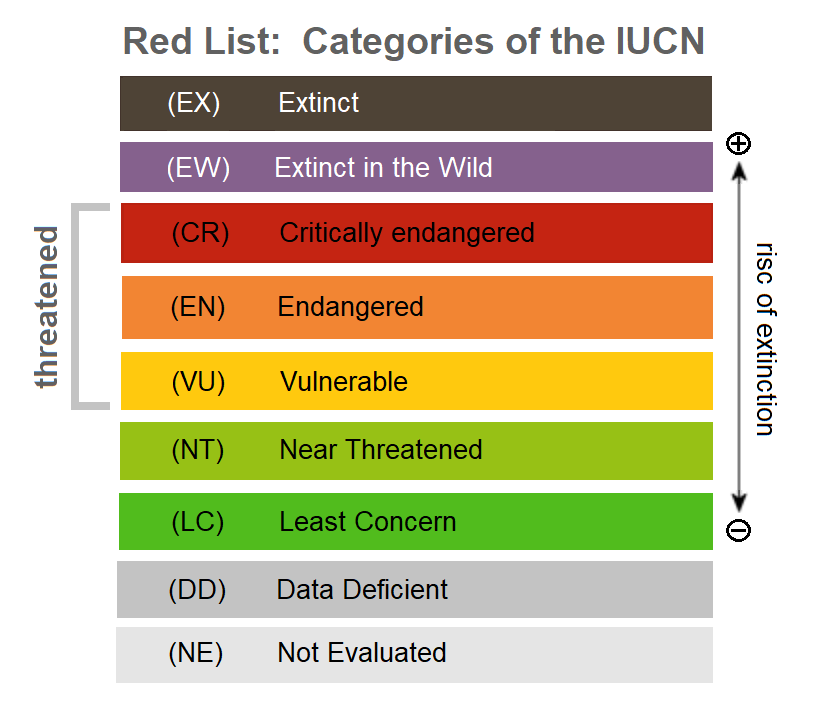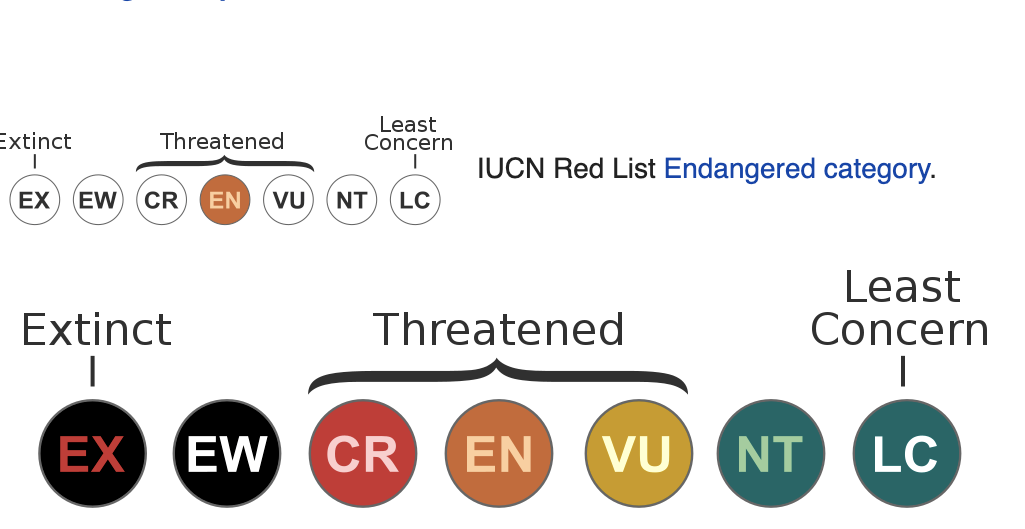IUCN Red list

About IUCN:
The International Union for Conservation of Nature (IUCN) is a global organization dedicated to conserving nature and promoting sustainable use of natural resources. It is the world’s oldest and largest environmental network, with over 1,400 member organizations and government agencies from more than 170 countries. The IUCN was established in 1948 and has its headquarters in Gland, Switzerland.
IUCN Red list:
The IUCN Red List, maintained by the International Union for Conservation of Nature (IUCN), is a comprehensive database that assesses the conservation status of various species of plants, animals, fungi, and other organisms. It is one of the most authoritative and widely recognized sources for information on the conservation status of species worldwide.
The main objective of the IUCN Red List is to provide an overview of the extinction risk faced by different species and to highlight those that are at higher risk of extinction. The Red List categorizes species into different threat levels, allowing policymakers, conservationists, and researchers to prioritize their efforts and resources to protect the most endangered species.
The Red List categories are as follows:

Categories on the IUCN Red List:
| Category | Description |
|---|---|
| Extinct (EX) | No known living individuals of the species remain. The species is believed to be completely extinct. |
| Extinct in the Wild (EW) | The species no longer exists in its natural habitat but only survives in captivity or as a result of human intervention. |
| Critically Endangered (CR) | The species is facing an extremely high risk of extinction in the wild. Urgent and immediate conservation measures are required to prevent its extinction. |
| Endangered (EN) | The species is facing a very high risk of extinction in the wild. It has experienced significant population declines or habitat loss and requires conservation actions. |
| Vulnerable (VU) | The species is at a high risk of extinction in the wild but is not yet considered critically endangered or endangered. Conservation efforts are needed to protect it. |
| Near Threatened (NT) | The species is close to qualifying for a threatened category but is not currently facing an immediate risk of extinction. Monitoring and conservation actions are necessary. |
| Least Concern (LC) | The species is not currently at risk of extinction. Its populations are stable, and it has a widespread and abundant distribution. |
| Data Deficient (DD) | Insufficient data is available to assess the conservation status of the species properly. More research is needed to determine its level of threat. |
| Not Evaluated (NE) | The species has not been evaluated against the Red List criteria yet. It may be due to a lack of available information or resources for assessment. |

In IUCN red list threaten category:
Threatened (includes Critically Endangered, Endangered, and Vulnerable):
The “Threatened” category includes species facing an increased risk of extinction in the wild. It is further divided into three subcategories based on the level of risk: Critically Endangered (CR), Endangered (EN), and Vulnerable (VU). That show’s in upper image.
Some Examples:
- Critically Endangered: The Amur Leopard (Panthera pardus orientalis) is critically endangered due to habitat loss and poaching.
- Endangered: The Asian Elephant (Elephas maximus) is endangered due to habitat destruction and human-wildlife conflict.
- Vulnerable: The Polar Bear (Ursus maritimus) is vulnerable due to the loss of sea ice habitat caused by climate change.